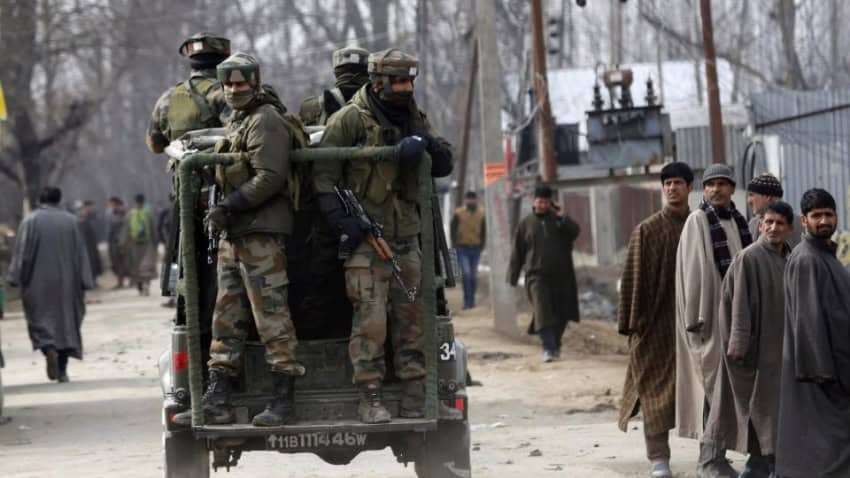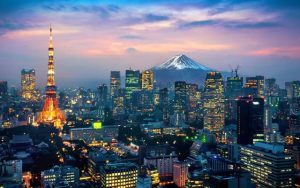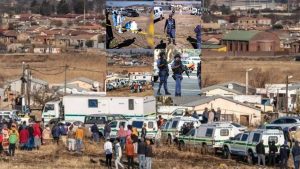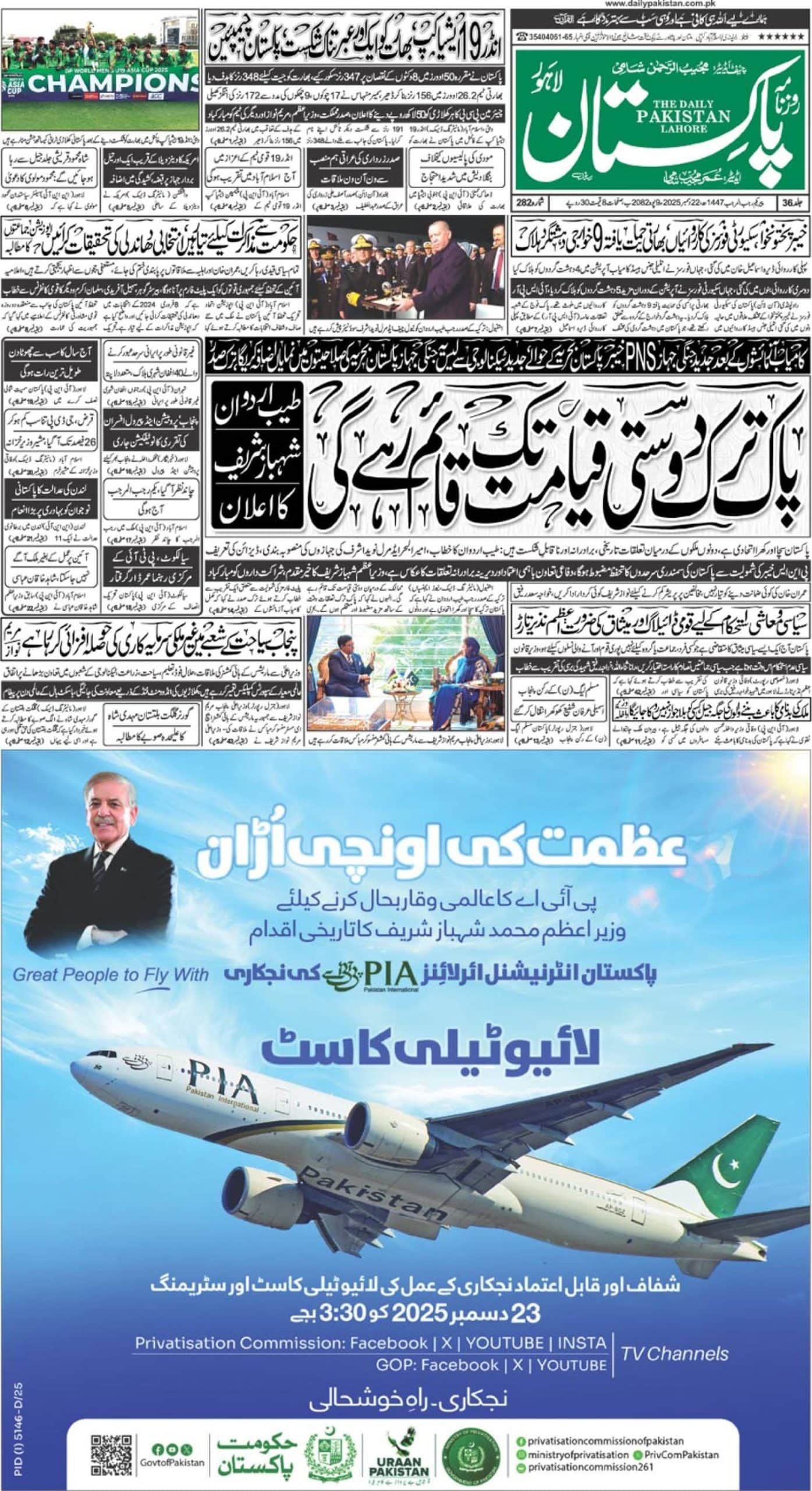SRINAGAR – Under a cover of ‘threats of militant attacks’, India is deploying over 35,000 additional paramilitary troops in the disputed Kashmir region to suppress the ongoing struggle for freedom.
Nearly 28,000 troops are being sent to Occupied Kashmir less than a week after New Delhi moved 10,000 army soldiers to the territory. Official sources said over 280 companies of paramilitary forces are being deployed in the Kashmir valley – a move raising serious concern among the opposition parties.
Following the massive build-up of paramilitary forces, Indian troops shot two Kashmiri youth dead during cordon and search operations in Baramulla and Shopian districts.
Prominent Kashmiri leaders, including Ghulam Nabi Sumjhi and Manzoor Ahmed Ghazi of All Parties Hurriyat Conference, were detained by the soldiers while they were on their way to attend an APHC meeting convened by Hurriyat Chairman, Syed Ali Gilani, at Hyderpora in Srinagar.
https://en.dailypakistan.com.pk/headline/blatant-aggression-against-all-intl-norms-exposes-true-character-of-indian-army-ispr/
Meanwhile, thousands of Indians have started leaving the disputed region after the local government, which is ruling IoK through Governor Rule, issued a security alert related to possible militant attacks in the area.
Reuters cited Indian security officials as saying Friday that they had found evidence of attacks planned by separatists on a major Hindu pilgrimage in Kashmir.
A local government order effectively called off the pilgrimage, asking the students, tourists and devout Hindus who trek to the Amarnath cave every year to return home.
https://twitter.com/obby786786/status/1157404399456509952
Authorities on Saturday also bused out hundreds of Indian students from some colleges in the region’s main city of Srinagar.
https://twitter.com/aechIvee/status/1157480023873376258
The Congress, in a statement issued after a meeting of the party’s Kashmir Policy Planning Group, expressed concern over widespread fear and apprehension among the people of Jammu and Kashmir about the government’s intentions of abolishing Article 35-A and Article 370.
It is due to these two articles that Indian citizens can’t buy land in the occupied region. What the abolishment of these two articles will essentially do is that it will render Kashmiris as ordinary Indian citizens and enable Indians (Hindu majority) to settle in the Muslim majority areas. Hence a sheer demographic change
The Congress said that all these steps are “creating an atmosphere of heightened insecurity and fear”.
The country’s main opposition party, led by Rahul Gandhi, urged the Centre to maintain the constitutional guarantees given to the state saying that the government should not take any decision that would precipitate a deep crisis.
https://en.dailypakistan.com.pk/headline/first-ever-un-report-on-kashmir-calls-for-international-inquiry-into-multiple-human-rights-violations-by-indian-army/
On the other hand, reports say, the Modi government is locking the Held-valley down to pursue its dangerous plan to declare the Hindu majority Jammu division as a separate state. (There are 3 divisions in IOK: Jammu, Kashmir & Ladakh). The BJP-led government is reportedly planning to declare Kashmir and Ladakh as Union territory, automatically rendering the two articles null and void while propelling the control of these two divisions directly under Delhi’s rule.
About 96.4% of the population of the Kashmir valley are Muslim followed by Hindus (2.45%) and Sikhs (0.98%) and others (0.17%).
https://twitter.com/MOwaisHF/status/1157604944867975169
Kashmir conflict
Predominantly Hindu India and Muslim-majority Pakistan have fought three wars since 1947, when the two nuclear powers both gained independence from the UK, and came close to another in 1999.
Wars in 1947 and 1965 were fought directly over Kashmir, and ongoing violence has killed more than 47,000 people since 1989. This toll, however, doesn’t include people who have disappeared due to the conflict, and some human rights groups and nongovernmental organizations put the death toll at twice that amount.
Kashmir initially remained independent and was free to accede to either nation. When the Hindu king of the princely state, Maharaja Hari Singh, chose to join India in exchange for military protection, Jammu & Kashmir became the only Muslim-majority state in the South Asian country.
Jammu & Kashmir covers around 45% of Kashmir, in the south and east of the region, while Pakistan controls Azad Kashmir, Gilgit and Baltistan, which cover around 35% of the total territory in the north and west. Both countries claim complete ownership of Kashmir; also in the picture is China, which controls around 20% of Kashmir territory known as Aksai Chin.
The issue is also one of the oldest items on the agenda at the United Nations, where India and Pakistan took their dispute soon after independence.
Both countries agreed to a plebiscite in principle, to allow Kashmiris to decide their own future, but it has never been held because it was predicated on the withdrawal of all military forces from the region, which has not happened even decades on.
Indian authorities wanted to show that they could guarantee the rights of Muslims in a secular state, but Kashmir is also key to Pakistani identity as a homeland for Muslims after partition in 1947.

Both countries have maintained a fragile ceasefire since 2003, although the two rivals regularly exchange fire across the border.
And the situation has now escalated to a new level, with both Pakistan and India frequently exchanging heavy fire on LoC, and aerial engagements over the divided territory in the backdrop of a homegrown suicide attack in Pulwama earlier this year.
https://en.dailypakistan.com.pk/headline/indian-fighter-jet-crashes-in-badgam/














